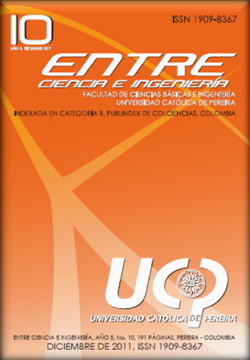Architecture for the Creation of Ubiquitous Services Devoted to Health
Keywords:
ubiquitous computing, service composition, e-health, software architecture,, web servicesAbstract
Ubiquitous systems have several applications in many fields such asindustry, education and health. In terms of health, they are used to supportboth the patient and health professionals in order to improve healthcare,through efficient access to critical information, diagnosis, treatment, andmonitoring of the patient.Ubiquitous computing is a concept that has gotten great importance aroundthe world where major projects about this topic are being developed.Current developments in data wired and wireless networks in terms ofreliability and bandwidth support, that have allowed the efficient use ofthese networks for the transport of multimedia traffic, as well as progressin building sensors and other wireless devices becoming more efficientin terms of battery consumption, have propitiated the development ofubiquitous systems.This article shows the design of a common architecture for the developmentof ubiquitous systems in the health domain for monitoring physiologicaland context variables of patients under clinical control.
References
Alonso, G., Casati, F., Kuno, H., Machiraju, V. 2004. “Web Services Concepts, Architectures and Applications”. ISBN: 3-540-44008- 9.
Alvez, P. Foti P. Proyecto Batuta. 2006. Generador de Aplicaciones Orquestadoras. Estado del Arte. Universidad de la Republica.
Barkhuus, L. (2002). Ubiquitous Computing: Transparency in Context-Aware Mobile Computing. In. Proc. Of UbiComp.
Ben Mokhtar, S., N. Georgantas, and V. Issarny (2006). Cocoa: Conversation-Based Service Composition in Pervasive Computing Environments. In Proc. of ICPS.
Biron Paul V. Shabo Amnon. 2006. HL7 Clinical Document Architecture, Release 2. JAMIA. 13:30 – 39.
El-Sayed, A.-R, and Black J. 2006. Semantic-based Context-aware Service Discovery in Pervasive-computing Environments. In Proc. of SIPE.
Hackmann, G., C. Gill, and G.-C. (2007). Extending BPEL for Interoperable Pervasive Computing. In Proc. of ICPS. Roman.
HU, M. 2004. Web Services Composition, Partition, and Quality of Service in Distributed System Integration and Re-engineering. Proceedings by deepX Ltd.
Ishii, H. 2004. “Bottles: A Transparent Interface as a Tribute to Mark Weiser”. IEICE Transactions Inf. And Syst, vol.E87-D, no.6, pp.1299-1311.
Paradise, R. 2004. Wearable Health Care System for Vital Signs Monitoring. Medicon conference.
Satyanarayanan, M. 2001. “Pervasive Computing: Vision and Challenges”. Personal Communications, IEEE, vol.8, no.4, pp.10 - 17.
Sun, J., Sauvola J. 2002. On Fundamental Concept of Mobility for Mobile Communications. In Proc. Of Mobile Radio Communications, 2002. The 13th IEEE International Symposium.
Weiser, M. 1991. The Computer for the Twenty-First Century. Scientific American, pp. 94-10.








 Revista Entre Ciencia e Ingeniería
Revista Entre Ciencia e Ingeniería .png) entrecei@ucp.edu.co
entrecei@ucp.edu.co.png) ISSN (Impreso) 1909-8367 - ISSN (En Línea) 2539-4169
ISSN (Impreso) 1909-8367 - ISSN (En Línea) 2539-4169 Attribution-NonCommercial 4.0 International (CC By-NC 4.0)
Attribution-NonCommercial 4.0 International (CC By-NC 4.0)
.png) Carrera 21 No. 49-95 Av. de las Américas, Pereira, Risaralda, Colombia
Carrera 21 No. 49-95 Av. de las Américas, Pereira, Risaralda, Colombia